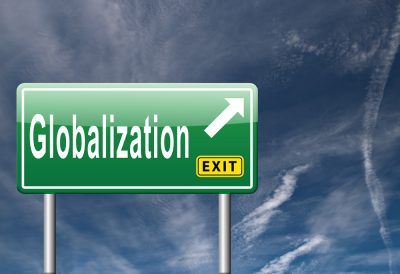Withdrawing from globalism: Implications for today’s insurance industry
An enormous transition from the last 35 years of worldwide mass production of products and services back to fragmented, protectionist production networks and supply chains is a challenge that the property and casualty (P&C) insurance sector has never faced before.
It’s true that carriers know how to endure bad times. Upon a calamity, the insurance sector steps in to restore what has been destroyed. Utilizing dispersed worldwide production systems has allowed them to accomplish this at a high rate of speed, volume, and (relatively) cheap cost.
But there is a limit to this period of consistent, inexpensive abundance.
Currently, interruptions in the supply chain are having a profound effect on everyone, including insurance. In January and February of last year, for instance, trade volumes in the Panama Canal decreased by 32%, while trade volumes in the Suez Canal decreased by 50% over the same period. Insurance is impacted by these and similar situations.
Imagine that a community is attacked by a powerful storm. That occurs frequently. 88.5% of American counties saw the declaration of a natural disaster between January 2013 and January 2023. In those situations, the demand for various personal property goods, auto components, and building supplies and tools quickly spikes. When such materials are in short supply, what happens? All in all, insurers still have contractual obligations to fulfill, and as a result, expenses rise, losses mount, and claimants endure protracted delays. Everyone is at a disadvantage.
The two main factors influencing supply chain changes are nationalism and demographics.
China is facing a dropping birth rate that could influence its labor force, and the country’s population fell by 2 million in 2023 alone. As major hubs for global industry, South Korea, Japan, and Germany all have fast aging labor forces; as a result, their working populations will decline, and their output will decline as well. Other nations are following suit. For instance, the U.S. population will peak in 2080 and then begin to fall, despite significant positive immigration flows.
On the other hand, a new era of geopolitical instability has been brought about by the rise of nationalism, current conflicts like the wars in the Middle East and Ukraine, anti-globalization sentiments in the United States, and “de-risking” in Europe. A fragmented world of protectionism and conflict threats is replacing the formerly uncontested supremacy of a global commercial network. In addition to reverting to historical norms, this also represents a radical reconstruction of contemporary supply chains that have enabled the widespread, reasonably priced replacement of insured items during the past few decades. Both the industry and its clients will be impacted.
These difficulties are made worse by the disparity between the overall demand and supply for insurance. The need for coverage is rising in tandem with the frequency of losses. The inability of certain authorities to permit appropriate pricing in conjunction with these losses limits insurers’ ability to take on comparable risks. Disruptions in the supply chain and rising claims settlement expenses intensify this disparity, forcing insurers out of the market while the need for insurance rises.
Strategies for insurance companies to adapt
Though difficult to implement, the answers are easy to explain. Carrier commitments to manage this changing environment include:
- Quick, smart adjustments to underwriting and pricing
- Effective yet affordable risk-reduction techniques
- Agreed upon supplier chain terms
With enough focus, the following can be accomplished.
- Accelerated underwriting speed
Climate change, supply chain problems, and legislative barriers can quickly render certain geographic areas or risk categories uninsurable. In certain situations, insurers need to be able to respond with eligibility steps accurately and promptly.
- Price reflecting speed
2020’s experience has shown us that we must react to risk and pricing fluctuations far more quickly. However, we need to use the data available with greater sophistication. Insurance prices are skyrocketing, and those who cannot quickly incorporate new, highly predictive characteristics into their ratings may face adverse selection. Years used to be the measure of speed; today, it’s months, and for top insurers, it’s weeks.
- Balance of managing risk
Options for reducing risk are always growing. In a post-globalized environment when replacement costs are higher and replacement timelines are longer, risk mitigation as opposed to loss replacement is looking more and more appealing from an economic standpoint.
- Oversee supply chain contracts
Manage the claims ecosystem proactively to guarantee preparedness in high-risk locations and for high-demand commodities. This might involve creative approaches to inventory management, such as storing essential parts to prevent shortages, or hedging techniques with vendors of products for regions.
The globe is shifting because of deglobalization. It won’t be simple for insurers (or other businesses) to adjust to this shift, even with their tools. All-out effort, strategic planning, and a proactive, open-minded mindset will be needed.


